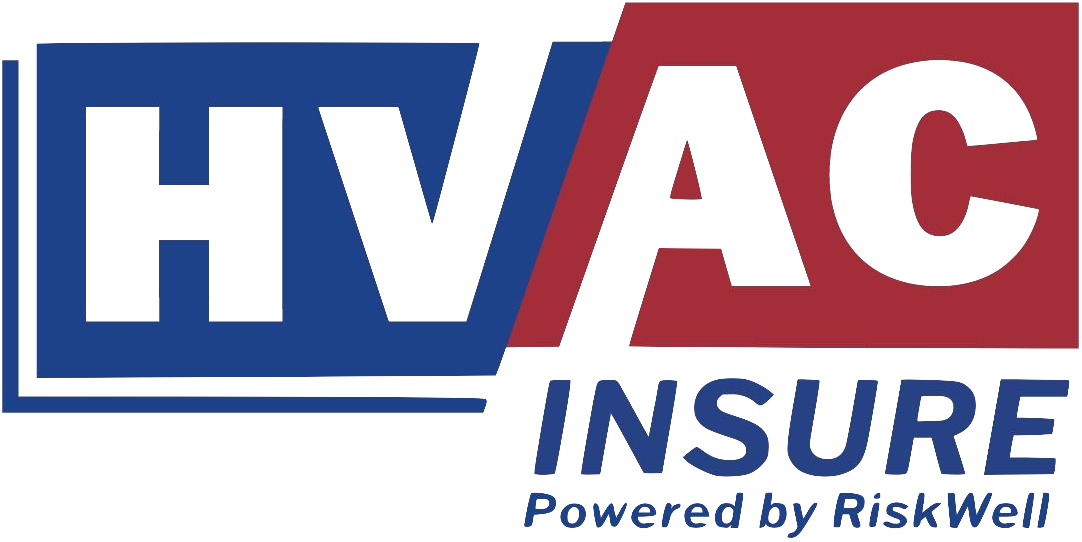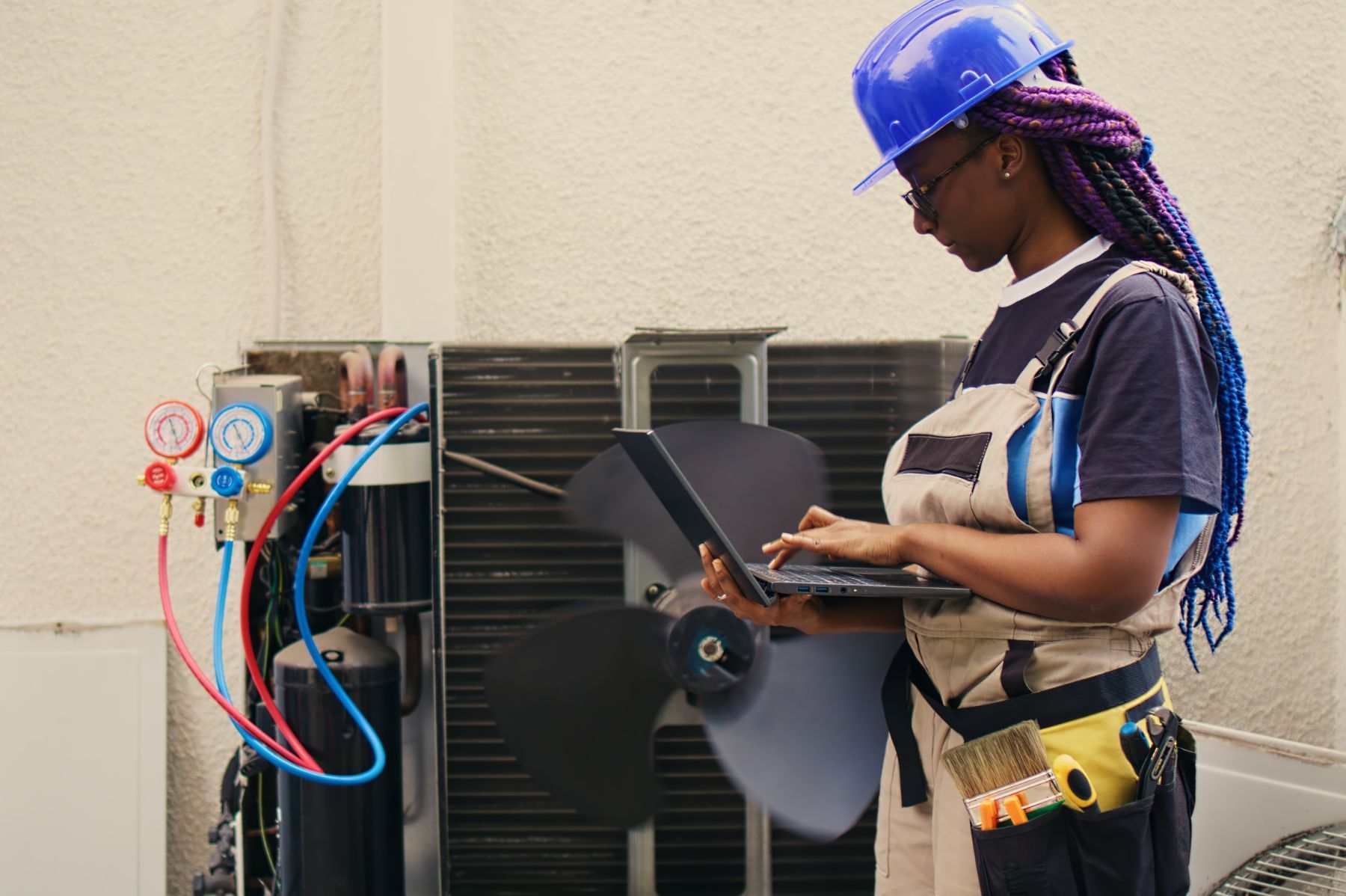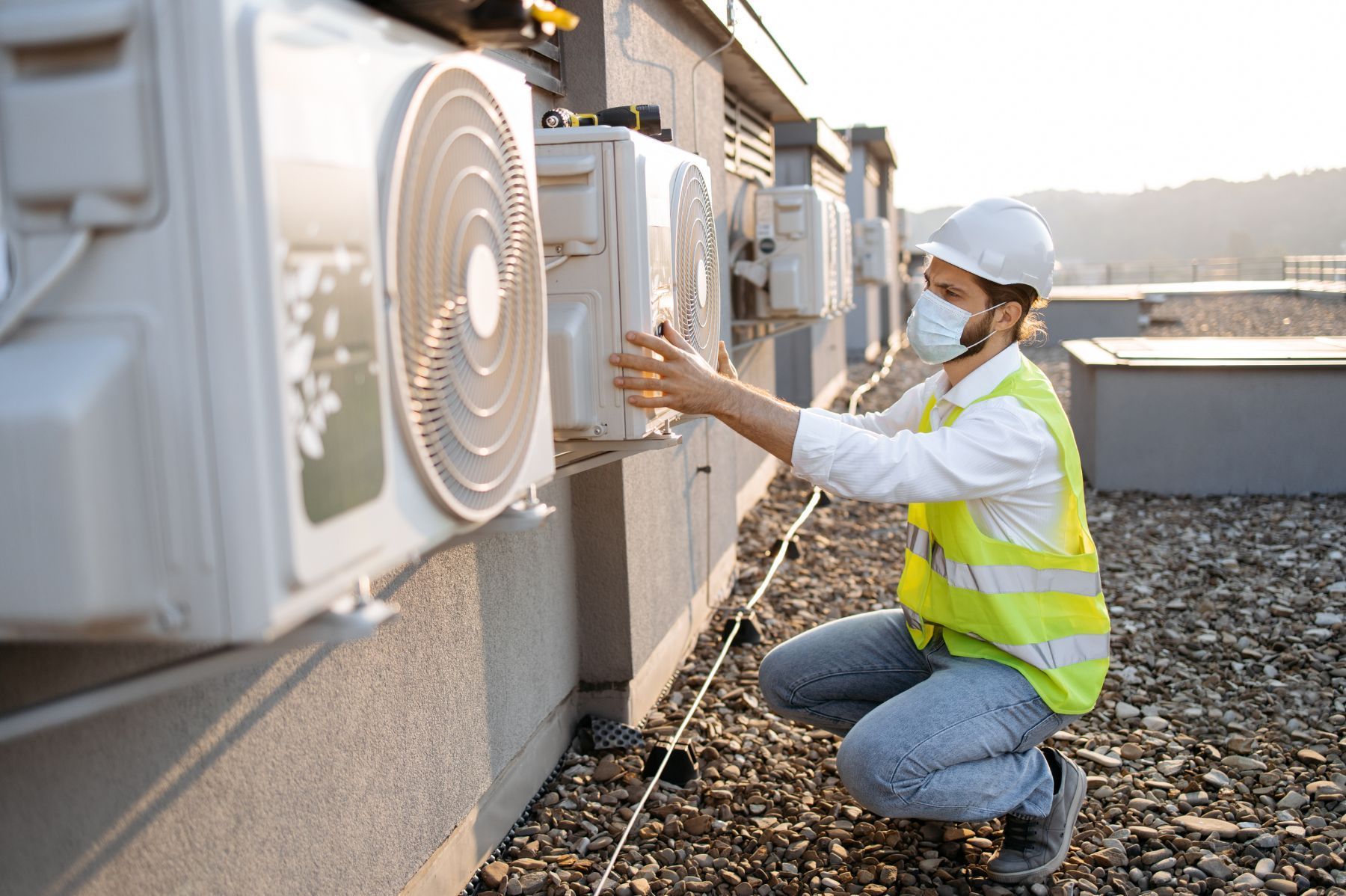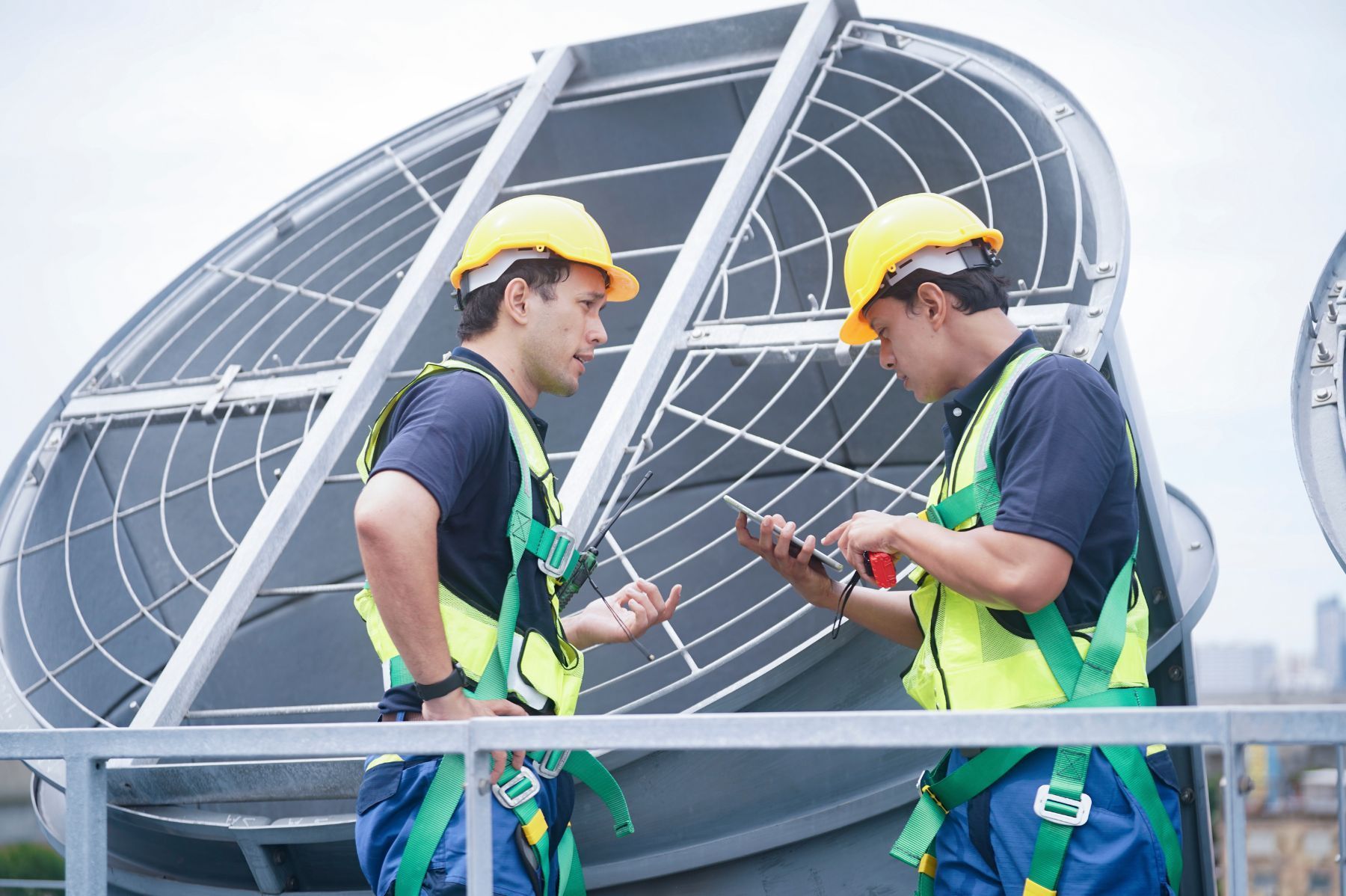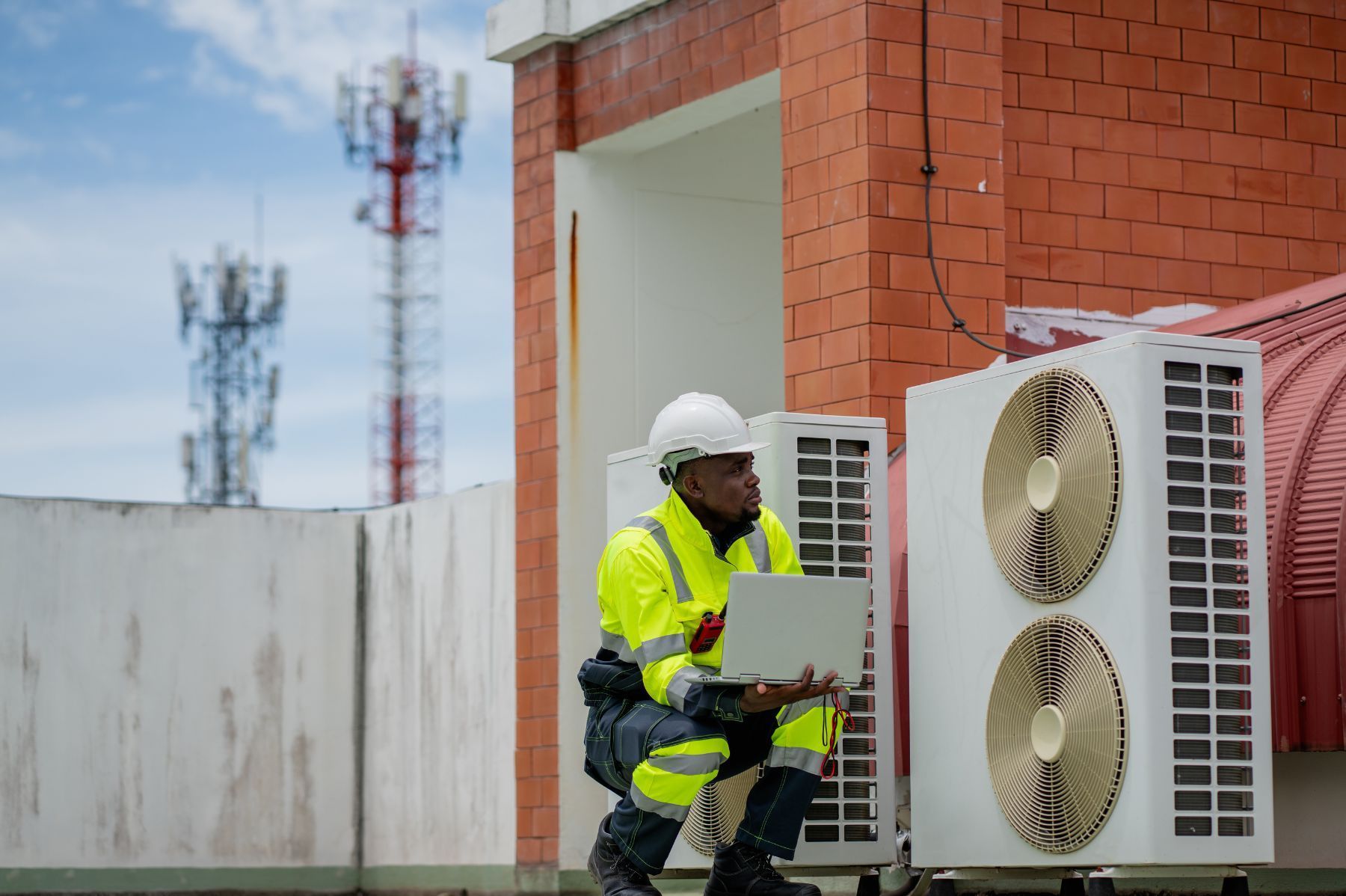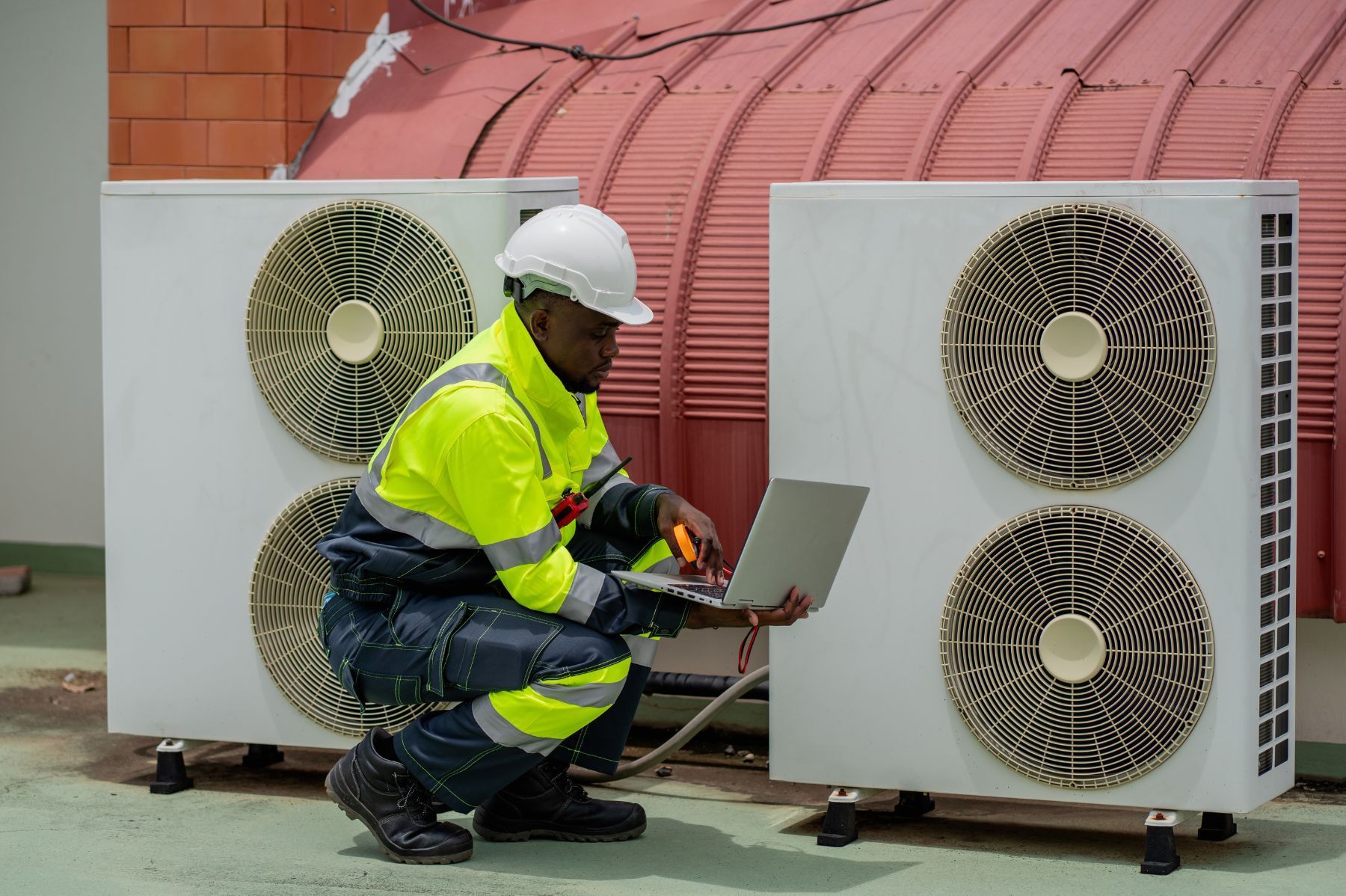Why Data Security Matters in HVAC: Emerging Threats in 2025
See How We're Different
or call us: (469) 678-8001

Imagine a commercial building where the heating, ventilation, and air conditioning (HVAC) system suddenly malfunctions-not because of mechanical failure, but due to a cyberattack. This scenario is no longer science fiction. As HVAC systems become increasingly connected through the Internet of Things (IoT) and smart technologies, the risk of data breaches and cyber threats grows alongside their operational benefits. Understanding why data security matters in HVAC is crucial for businesses aiming to protect their infrastructure, energy costs, and occupant safety in 2025 and beyond.
The Growing Digital Footprint of HVAC Systems
HVAC systems have evolved far beyond simple temperature control units. Today, about 70% of new HVAC installations feature smart technology, integrating sensors, remote management, and AI-driven controls. This surge in connectivity is transforming building management but also expanding the attack surface for cyber threats.
For instance, over 55% of new HVAC units installed in 2022 incorporated Internet of Things (IoT) features that enable remote monitoring and adjustments. These devices generate massive amounts of data, feeding into platforms that can predict maintenance needs and optimize energy use. In fact, projections for 2025 expect 5 million new IoT-enabled commercial thermostats worldwide, which will produce over 50 million predictive maintenance alerts in 2024 alone, helping prevent costly downtime.
However, this connectivity depends heavily on protocols like BACnet, which will see over 12 million new compatible devices shipped in 2024. Each device represents a potential entry point for hackers if not properly secured. The convergence of HVAC with IoT is revolutionizing building efficiency but also demands robust cybersecurity strategies to protect sensitive data and operational integrity. For more insights, see the Astute Analytica report on the commercial HVAC market.
Moreover, the integration of HVAC systems with smart building technologies is paving the way for enhanced energy efficiency and sustainability. By utilizing machine learning algorithms, these systems can analyze historical data and adapt their operations in real-time, significantly reducing energy consumption and greenhouse gas emissions. For example, smart HVAC systems can automatically adjust settings based on occupancy patterns, ensuring that energy is not wasted in unoccupied spaces. This not only lowers utility bills but also contributes to a greener environment, aligning with global efforts to combat climate change.
As the demand for smart HVAC solutions grows, manufacturers are also focusing on user-friendly interfaces and interoperability among devices. This means that building managers can easily integrate HVAC controls with other smart systems, such as lighting and security, creating a cohesive ecosystem that enhances overall building performance. With advancements in cloud computing, data from these systems can be accessed remotely, allowing for more effective decision-making and quicker responses to any operational issues that may arise. As we move forward, the potential for innovation in HVAC technology seems limitless, promising even greater efficiency and smarter solutions for the buildings of tomorrow.
Why HVAC Data Security Cannot Be Overlooked
Data breaches in HVAC systems can lead to far more than just privacy concerns. These systems control critical environmental factors—temperature, humidity, and air quality—that directly impact occupant health and comfort. A compromised HVAC system can cause physical damage, disrupt business operations, and even pose safety risks.
Consider that HVAC systems account for roughly 50% of energy consumption in commercial buildings and about 12% of global electricity use. Disruptions or manipulations could lead to significant energy waste or spikes in operational costs. Moreover, refrigerant emissions from HVAC systems contributed to 2.4 gigatons of CO2 equivalent greenhouse gases in 2022, underscoring the environmental stakes tied to system efficiency and control.
Cyberattacks could exploit these vulnerabilities to manipulate system settings, causing overheating, freezing, or poor air quality. Advanced filtration systems, which can reduce airborne pathogens by over 90%, depend on precise controls to function effectively. A breach could disable these safeguards, putting building occupants at risk. This makes securing HVAC data not just a technical necessity but a vital component of health and safety management.
Furthermore, the integration of IoT devices within HVAC systems has expanded the attack surface for potential cyber threats. These smart devices, while enhancing efficiency and user experience, often lack robust security measures, making them prime targets for hackers. For instance, if an unauthorized user gains access to a smart thermostat, they could not only alter temperature settings but also manipulate other connected systems, leading to cascading failures throughout the building's infrastructure. This interconnectedness highlights the urgent need for comprehensive cybersecurity protocols that encompass all aspects of HVAC systems.
Additionally, the implications of HVAC data security extend beyond immediate operational concerns. Regulatory bodies are increasingly mandating stricter compliance measures regarding data protection and energy efficiency. Failure to adhere to these regulations can result in hefty fines and legal repercussions, further emphasizing the importance of a proactive approach to HVAC data security. Organizations must invest in training for their personnel, ensuring that everyone from technicians to management understands the potential risks and the best practices for safeguarding sensitive data. By fostering a culture of security awareness, businesses can better protect their HVAC systems and, by extension, the health and safety of their occupants.
Emerging Cyber Threats Targeting HVAC Systems
Several types of cyber threats are increasingly targeting HVAC infrastructure. Ransomware attacks, where hackers lock down system controls until a ransom is paid, have become more common. Such attacks can halt building operations and lead to costly recovery efforts. The impact of these attacks can extend beyond immediate financial loss, as they can also damage a company's reputation and erode customer trust. In some cases, organizations may face regulatory scrutiny if they fail to protect sensitive data or maintain operational continuity, further complicating recovery efforts.
Another growing concern is the exploitation of IoT vulnerabilities. Many HVAC devices use default passwords or outdated firmware, making them easy targets. Attackers can gain unauthorized access to system controls or use compromised devices as entry points into broader corporate networks. This issue is exacerbated by the rapid adoption of smart technologies in HVAC systems, which often prioritize convenience over security. As a result, organizations must prioritize regular updates and robust security protocols to safeguard their systems against these vulnerabilities.
Supply chain attacks are also on the rise. With modular and prefabricated HVAC components becoming more popular—boosting installation efficiency by around 25%—the risk of compromised hardware or software entering the system increases. Ensuring the integrity of every component is critical to preventing breaches. Companies are now encouraged to implement stringent vetting processes for suppliers and conduct thorough security assessments of all incoming components, as even a single compromised part can jeopardize the entire system's security.
Additionally, the rise of drone inspections for HVAC systems, which have increased by 60% since 2020, introduces new data transmission points that require secure channels to prevent interception or manipulation. As drones collect and transmit sensitive operational data, the potential for cybercriminals to exploit these channels becomes a pressing concern. Organizations must invest in encryption technologies and secure communication protocols to protect the data being transmitted, ensuring that unauthorized parties cannot access or alter critical information during inspections.
Furthermore, the integration of artificial intelligence in HVAC systems is reshaping how these infrastructures operate, but it also opens new avenues for cyber threats. AI algorithms can optimize energy efficiency and predictive maintenance, yet they can also be manipulated if not properly secured. Attackers could potentially feed false data into AI systems, leading to incorrect operational decisions that could compromise system performance and safety. This highlights the importance of not only securing the physical components of HVAC systems but also ensuring that the software and algorithms driving these systems are resilient against cyber threats.
Strategies for Strengthening HVAC Data Security
Protecting HVAC systems requires a multi-layered approach that includes technology, processes, and training. First, manufacturers and building managers must prioritize secure device design and regular firmware updates. Changing default passwords and implementing strong authentication protocols are fundamental steps.
Network segmentation is another effective practice. Separating HVAC control networks from other business-critical systems limits the potential damage if one segment is compromised. Integrating AI-powered monitoring tools can detect unusual activity early, enabling rapid response to potential threats.
Cloud-connected commercial chillers and HVAC units, expected to reach over 100,000 by the end of 2025, offer remote diagnostics and optimization but also require secure cloud infrastructures. Employing encryption and secure APIs helps protect data in transit and at rest.
Training staff on cybersecurity best practices is equally important. Human error remains a significant risk factor, so awareness programs tailored to facilities management teams can reduce vulnerabilities.
In addition to training, regular security audits are crucial for identifying weaknesses in the HVAC system's defenses. These audits should assess both physical and digital security measures, ensuring that all components, from sensors to control panels, are adequately protected against unauthorized access. Furthermore, implementing a robust incident response plan can help organizations swiftly mitigate the impact of a security breach, ensuring that they can recover operations with minimal downtime.
Moreover, collaboration with cybersecurity experts can enhance the overall security posture of HVAC systems. By leveraging the insights of professionals who specialize in industrial control systems, organizations can stay ahead of emerging threats and adopt best practices that are continually evolving. This proactive approach not only safeguards the HVAC infrastructure but also instills confidence in stakeholders regarding the integrity and reliability of the building's operational systems.
The Role of Smart Building Projects and Digital Twins
Smart building projects are accelerating the integration of HVAC automation with cybersecurity. At least 3,000 large-scale commercial smart building projects with fully integrated HVAC automation are slated to begin in 2025. These projects emphasize not only operational efficiency but also secure data management. As energy efficiency becomes a priority for businesses, the smart building initiative is also a response to regulatory pressures and the growing demand for sustainability. By leveraging advanced sensors and IoT devices, these buildings can monitor energy consumption in real-time, allowing for immediate adjustments that can lead to significant cost savings and reduced environmental impact.
Digital twin technology is gaining traction for HVAC systems. By creating virtual replicas of physical systems, building managers can simulate performance, predict failures, and optimize maintenance without risking real-world disruptions. An estimated 5,000 commercial properties will implement HVAC digital twins in 2024, enhancing both operational insight and security posture. This technology not only aids in predictive maintenance but also allows for scenario modeling, where managers can test various operational strategies to find the most efficient approach. Furthermore, as buildings become more complex, the ability to visualize and interact with these digital models will be crucial for effective decision-making.
These digital twins also enable participation in automated demand-response events-expected to exceed 2 million in 2025-helping stabilize power grids while maintaining system security. The integration of these technologies highlights the importance of cybersecurity as a foundational element of modern HVAC management. As buildings become increasingly interconnected, the risk of cyber threats escalates, making robust security protocols essential. This includes not only protecting sensitive operational data but also ensuring the integrity of the systems that manage critical infrastructure. The collaboration between HVAC systems and cybersecurity measures will be pivotal in creating resilient smart buildings that can adapt to both operational demands and security challenges.
Moreover, the rise of smart building technologies is fostering a new era of collaboration among various stakeholders, including architects, engineers, and IT professionals. This multidisciplinary approach ensures that all aspects of building design and operation are aligned with the goals of efficiency and security. As these projects evolve, the sharing of data across platforms will become increasingly important, enabling a holistic view of building performance. With advancements in machine learning and artificial intelligence, smart buildings will not only respond to current conditions but also learn from historical data to anticipate future needs, further enhancing their operational capabilities.
Looking Ahead: The Future of HVAC Security
The commercial HVAC market is projected to reach a valuation of over US$120 billion by 2033, driven by innovations in IoT, AI, and smart building technologies. As these systems become more complex and interconnected, the stakes for data security will only rise.
Emerging trends point to increased adoption of AI in HVAC control systems, with a projected 25% annual growth through 2025. AI can enhance cybersecurity by identifying patterns and anomalies that humans might miss, but it also introduces new challenges around algorithm integrity and data privacy.
The digital economy’s expansion fuels demand for specialized HVAC solutions in data centers, with at least 150 new hyperscale facilities planned globally in 2025. These centers require robust cooling systems-over 250,000 new computer room air conditioner and air handler units are expected to be installed in 2025 alone. Securing these critical infrastructures against cyber threats is paramount to safeguarding data and operational continuity.
For a detailed look at the market projections and technological advancements shaping this future, refer to the
ZipDo Education Reports 2025 on HVAC industry statistics.
What Building Owners and Managers Should Do Now
Understanding the risks is the first step. Building owners and facility managers should conduct thorough risk assessments of their HVAC systems, identifying potential vulnerabilities in hardware, software, and network configurations.
Partnering with cybersecurity experts who specialize in industrial control systems can provide tailored solutions. Regular audits, penetration testing, and compliance checks help maintain a strong security posture.
Investing in advanced filtration and humidity control systems not only improves indoor air quality but also requires secure management to function effectively. With humidity control adoption rising 15% annually, these systems are becoming standard in commercial buildings.
Finally, staying informed about emerging threats and best practices is essential. The HVAC industry’s rapid digital transformation demands vigilance and proactive security measures to protect assets and occupants alike.
Frequently Asked Questions
Q: Why are HVAC systems vulnerable to cyberattacks?
A: Many HVAC systems are connected to the internet and use IoT devices, which can have weak security settings or outdated software, making them targets for hackers.
Q: Can a cyberattack on HVAC systems affect building occupants?
A: Yes. Attacks can disrupt temperature control, air quality, and humidity, potentially causing discomfort or health risks.
Q: How can smart HVAC systems improve building efficiency?
A: They use sensors and AI to optimize energy use, predict maintenance needs, and adjust settings automatically for better performance.
Q: What is a digital twin in HVAC?
A: It’s a virtual model of an HVAC system that helps simulate and optimize its operation without affecting the actual system.
Q: Are there industry standards for HVAC cybersecurity?
A: Yes. Protocols like BACnet are widely used, and manufacturers follow best practices for device security and network protection.
Q: How often should HVAC firmware be updated?
A: Regularly, as recommended by manufacturers, to patch security vulnerabilities and improve functionality.
